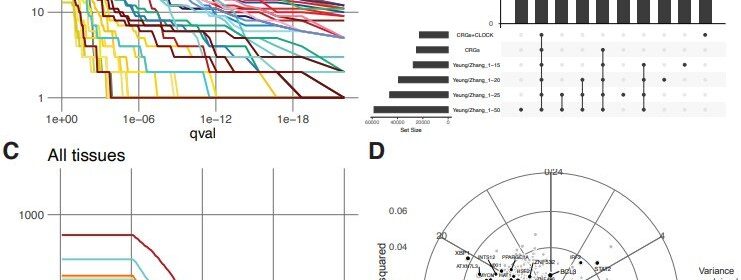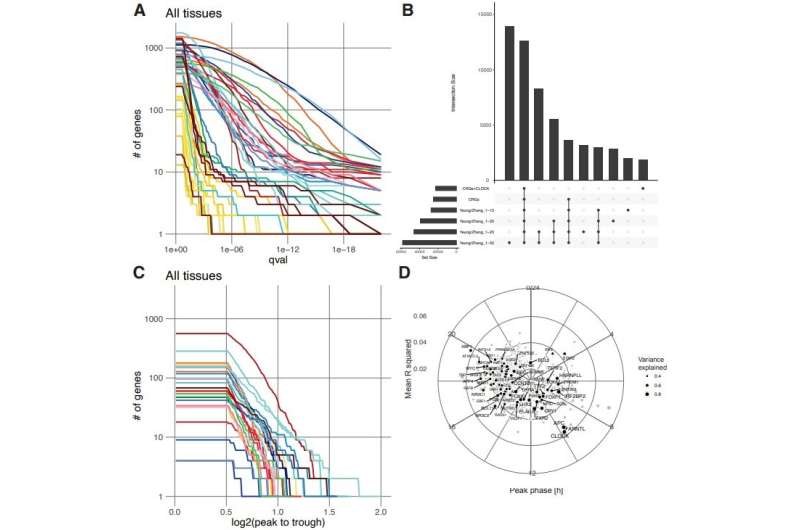Gender and age differences found in gene expression related to circadian clock

A trio of bioengineering scientists at Ecole Polytechnique Fédérale de Lausanne has found age and gender differences in gene expression related to the circadian clock. For their paper published in the journal Science, Lorenzo Talamanca, Cédric Gobet and Felix Naef analyzed data obtained for the Genotype-Tissue Expression project.
Prior research has shown that rhythmic changes occur in gene expression due to the circadian clock, particularly during the morning and evening hours. But as the researchers in this new effort note, not much study has been done regarding differences in circadian gene expression due to gender or age.
To find out if such differences exist, the trio analyzed data obtained for the Genotype-Tissue Expression project. They filtered down donors in the database to just 914 and used their RNA data profiles as input for an algorithm that assigns a circadian phase to a given sample of tissue. This allowed them to note the level of material present, such as protein, that had been genetically expressed. Different levels showed different expression levels during different parts of the circadian cycle—testing was done on 46 tissue samples.
In looking at the sources of the tissue samples, the researchers observed differences between tissue types and between male and female donors and also between younger and older donors. More specifically, they found that gene expression related to metabolism was more rhythmic compared to other body tissue and that brain tissue was less. They also found more rhythmicity in women compared to men and more in young people than in older people.
The researchers noted that gender differences were much higher than expected—the number of rhythmic genes in women was roughly double that in men. And it varied by body parts—women showed more rhythmicity in gene expression in the liver and adrenal gland. They also found variances by body part related to age—older people, for example, had less rhythmicity in genes related to coronary arteries and the cardiovascular system in general. They also found that the circadian clock tended to shift from 24 hours to 12 as people reached a certain age.
More information:
Lorenzo Talamanca et al, Sex-dimorphic and age-dependent organization of 24-hour gene expression rhythms in humans, Science (2023). DOI: 10.1126/science.add0846
Journal information:
Science
Source: Read Full Article
